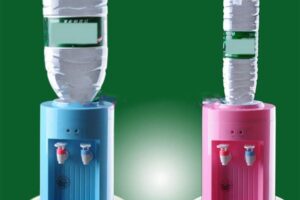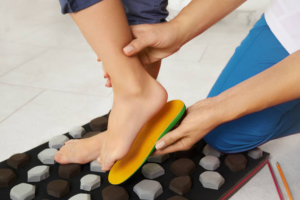
Laser facial treatment has become a popular solution for various skin issues, ranging from acne and scars to fine lines and wrinkles. If you’re struggling with these concerns, exploring laser facial treatment may offer the answer you want. In this blog, we’ll provide an in-depth overview of how laser facial treatments work, their benefits, and what you can expect during the procedure. Whether your goal is to improve acne scars, reduce wrinkles, or eliminate stubborn blemishes, understanding the power of laser facial treatments is essential.

What Is Laser Facial Treatment?
Laser facial treatment employs focused light energy to target and resolve specific skin concerns. These treatments can penetrate deeper layers of the skin, promoting collagen production, enhancing skin texture, and reducing pigmentation. The versatility of laser treatments makes them effective for a range of skin issues, including acne, acne scars, fine lines, wrinkles, and more.
One of the significant benefits of laser facial treatment is its precision. Unlike other skin therapies, lasers can effectively target problem areas without harming surrounding healthy skin. This precision minimizes damage and accelerates the healing process, making it an attractive option for individuals seeking visible results with minimal downtime.
How Laser Facial Treatments Work
Laser facial treatments utilize various types of lasers, tailored to the specific skin concern being addressed. The two primary categories of lasers are ablative and non-ablative:
- Ablative Lasers: These lasers remove the outer layer of damaged skin, stimulating the production of new skin cells and encouraging collagen synthesis. Ablative lasers are generally employed for more severe skin concerns, such as deep wrinkles and significant scarring.
- Non-Ablative Lasers: These lasers target the deeper layers of skin without disrupting the surface layer. They are often used for treating acne scars, fine lines, and mild wrinkles, as they promote collagen production while requiring less recovery time.
The choice of laser will depend on your skin type, the severity of the issue, and your overall skincare goals.
Laser Facial Treatment for Acne
Acne is a prevalent skin condition that can lead to discomfort and a decline in self-esteem. Laser facial treatment can effectively reduce acne and prevent future outbreaks through several mechanisms:
- Reducing Oil Production: Lasers can target and shrink sebaceous glands in the skin to decrease excess oil, a key contributor to acne. By lowering oil production, laser treatments help prevent clogged pores and subsequent breakouts.
- Eliminating Acne-Causing Bacteria: Certain lasers are specifically designed to destroy the bacteria that cause acne. By eradicating this bacteria, laser facial treatment can reduce active acne and prevent new lesions from forming.
- Alleviating Inflammation and Redness: Laser treatments can decrease the inflammation and redness associated with acne, leading to a more even skin tone. This calming effect makes blemishes less noticeable.
- Minimizing Acne Scars: For individuals dealing with both active acne and lingering scars, laser treatments can promote new skin cell growth and enhance collagen production, effectively reducing the visibility of scars.
Laser Facial Treatment for Acne Scars
Acne scars can be challenging to treat, but laser facial treatments provide an effective approach to minimizing their appearance. The mechanism of action involves stimulating collagen production, which smooths out skin texture and lessens the depth of scars.
- Resurfacing the Skin: Ablative lasers, such as CO2 and erbium lasers, are particularly effective for addressing acne scars. By removing the damaged outer layer of skin, these lasers encourage new skin formation. As the skin heals, scars become less prominent, and overall tone improves.
- Stimulating Collagen Production: Non-ablative lasers, such as fractional lasers, penetrate the deeper skin layers to promote new collagen synthesis. Over time, this leads to improved skin texture and a reduction in the appearance of acne scars.
- Smoothing Out Texture: Laser treatments not only reduce the visibility of scars but also help smooth rough patches, resulting in a more uniform appearance. As new skin cells regenerate, the overall complexion appears rejuvenated and healthier.
Laser Facial Treatment for Wrinkles
Wrinkles are a natural part of aging, but laser facial treatments can help diminish their appearance and slow the aging process. These treatments work by tightening the skin and stimulating the production of collagen and elastin, essential for maintaining firm, youthful skin.
- Reducing Fine Lines and Wrinkles: Non-ablative lasers, such as fractional lasers, are commonly employed to minimize fine lines and mild wrinkles. These lasers stimulate collagen production beneath the skin’s surface, enhancing elasticity and making fine lines less noticeable.
- Smoothing Deep Wrinkles: For deeper wrinkles, ablative lasers are ideal. By removing the top layer of skin and promoting the growth of fresh, healthy skin, ablative lasers can significantly reduce the visibility of deeper wrinkles over time.
- Tightening Loose Skin: As collagen production increases, laser facial treatments can help firm sagging skin. This tightening effect can lead to a more youthful and toned appearance, particularly in areas around the eyes, mouth, and forehead.
Benefits of Laser Facial Treatment
In addition to treating acne, scars, and wrinkles, laser facial treatments offer several advantages:
- Precision: Laser treatments precisely target specific areas without harming surrounding tissue, making them effective for localized skin concerns.
- Non-invasive: Many laser procedures are non-invasive, which means they do not require surgery or extensive recovery periods.
- Improved Skin Texture: These treatments enhance overall skin texture by promoting the growth of healthy new skin cells.
- Minimal Downtime: Depending on the laser type used, many treatments involve little to no downtime, allowing you to quickly return to your normal activities.
- Long-lasting Results: With proper care and maintenance, the effects of laser facial treatments can be enduring, resulting in a smooth, youthful appearance for years.
What to Expect During a Laser Facial Treatment
Before you undergo laser facial treatment, consulting with a dermatologist or skincare professional is crucial. They will evaluate your skin and recommend the most suitable laser type based on your skin type, concerns, and objectives.
During the treatment, a laser device is directed at the specific area being addressed. The duration of the procedure can range from 30 minutes to an hour, depending on the laser type and the severity of the condition. While some treatments may be relatively painless, others might require a topical anesthetic to minimize discomfort.
Recovery and Aftercare
Recovery time varies based on the type of laser used. Non-ablative lasers generally have minimal downtime, while ablative lasers may necessitate a few days to a week for recovery. It is essential to adhere to your dermatologist’s aftercare guidelines, which may include avoiding sun exposure, using gentle skincare products, and keeping the treated area well-moisturized.
Conclusion
Laser facial treatment is a highly effective option for addressing a range of skin concerns, including acne, scars, and wrinkles. By promoting collagen production and encouraging the growth of new skin cells, laser treatments can significantly enhance your skin’s texture, tone, and overall appearance. Whether you’re battling persistent acne, dealing with deep scars, or seeking to reduce fine lines, laser treatments offer long-lasting, noticeable results with minimal downtime.




